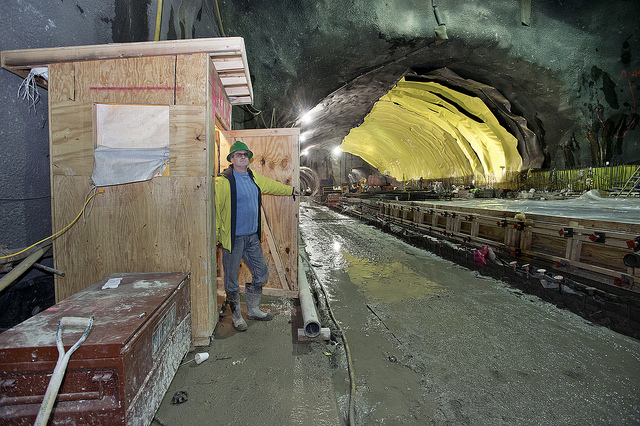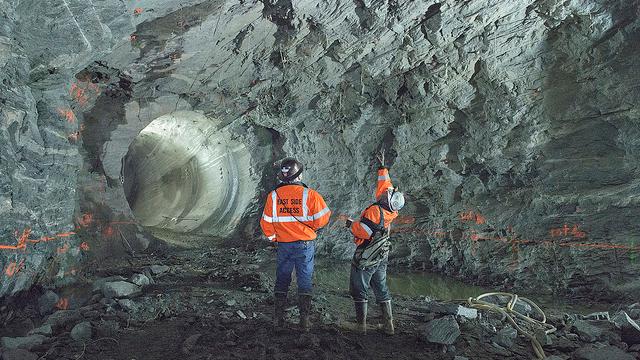The sprawling construction sites buried below NYC are carefully regulated places, inaccessible to the public. But one photographer has been exploring these caverns and tunnels for 15 years at the MTA’s request — and his work paints an amazing picture of life underground.
His name is Patrick Cashin, and he was a Newsweek lab technician and photographer when the MTA contracted him to document the new South Ferry station in 2000. As he told me over email this week, soon he was being asked to photograph the MTA’s flagship mega-projects, like the East Side Access project and the Second Avenue Subway. He’s often on the scene at MTA projects above ground these days too, and an exhibit of his work, called Breaking Ground, is on view right now in the Bowling Green station right now.
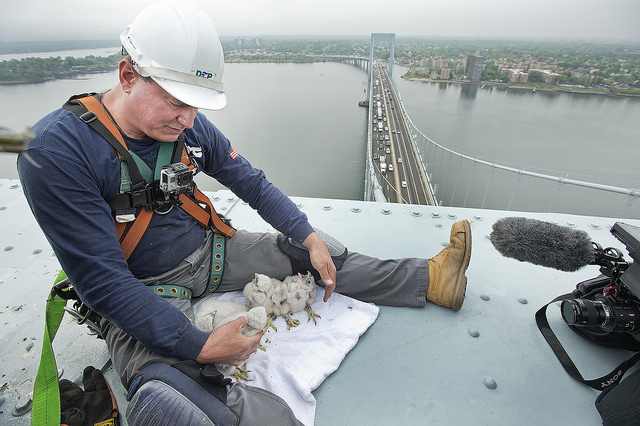
Cashin photographed a wildlife expert tagging these Peregrine falcon chicks atop the MTA-maintained Throgs Neck Bridge in 2014.
15 years is a long time to spend photographing a particular subject, and I was curious what’s kept him with the MTA for so long. Does he have a favourite part of the process? As Cashin told me, it’s the brutal, early moments of the digging that he enjoys the most:
I like being down underground at all the projects, especially in the very beginning. They were all big holes in the ground back then — a lot of mud, noise and heavy equipment everywhere. I know if I stood in one place too long the sand hogs would just run me over and keep going. Now the projects are starting to look like stations and it’s interesting to see the tracks being laid and signals being installed.
Cashin says he tries to use what light is available to give a sense for the atmosphere in these caverns and tunnels. “The noise or grain show, but I think that adds to the feeling of being down in a dark, dirty place,” he says. Usually, since so much is going on with the work, he has to shoot hand-held. “I like documenting how the projects are progressing but also want to show how hard the men and women are working in these difficult conductions underground.”
Take a look at some highlights from his 15-year tenure below, all pulled from the MTA’s great Flickr page. Check out Breaking Ground for the next year.
This shot shows the jagged edges of the East Side Access caverns, newly blasted in 2013, where a concourse to LIRR trains will eventually be built.

Many of Cashin’s photos almost look like paintings. Here’s one of the Second Avenue Subway project in 2009.
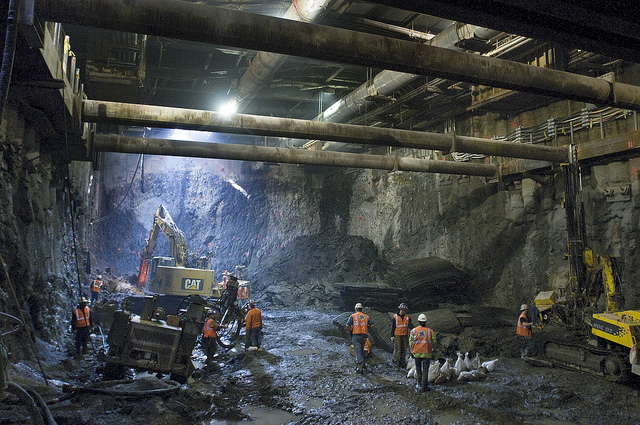
Even though tunnel porn is great, some of Cashin’s most compelling images are of the mundane side of life underground.
This board full of brass plates is how “sandhogs and other workers” log in and out of their jobs at the East Side Access project — here’s Senior Quality Engineer William Ury taking tallies.
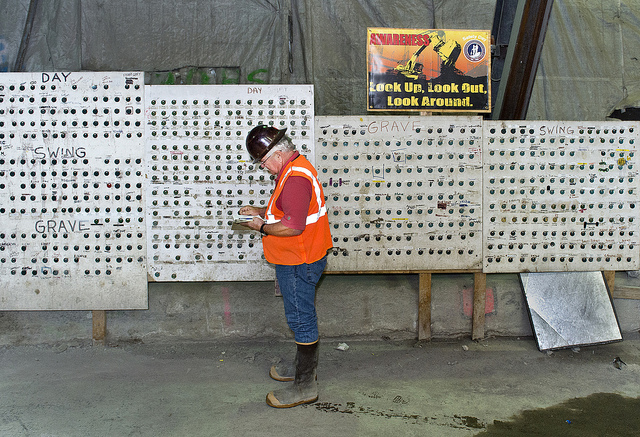
Shovels and brooms propped up on the wet floor of a newly-sealed tunnel in the Manhattan side of the East Side Access project in 2013.

A worker waits at the elevator leading to the East Side Access project, in 2011:
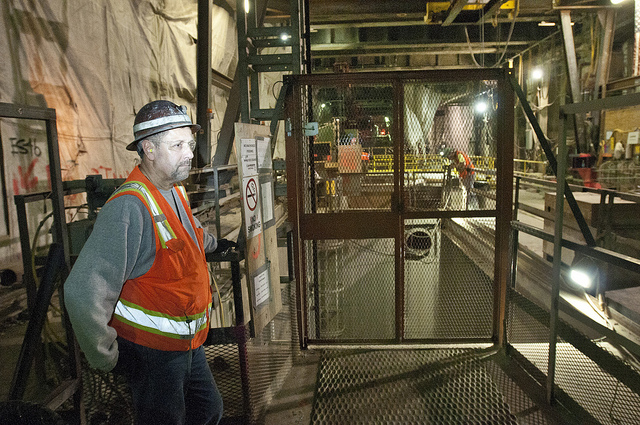
A hard hat-clad MTA worker in the construction elevator in one cavern at the future site of the Second Avenue Subway’s 86th Street station in 2014.

Cashin is good at putting the humans at work on these mega-projects in perspective.
Here are five, dwarfed by the size of the East Side Access project in Sunnyside in 2011.
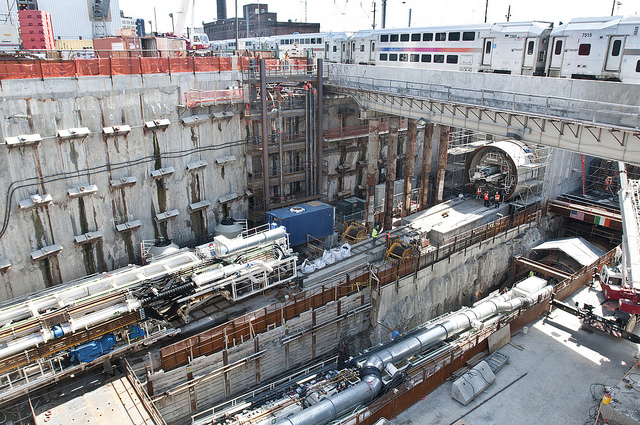
Likewise, here’s an amazing shot of a single worker illuminated by daylight filtering down into the excavation site where east tunnel of the Second Avenue Subway was being bored in 2011:

But Cashin doesn’t just photograph the MTA’s capital projects. He also documents life underground — and sometimes, very far above it.
The MTA is also responsible for bridges, which means caring for the peregrine falcons that nest atop some of them. Here’s a shot of one falcon chick, being “banded” for tracking purposes by a city wildlife specialist named Chris Nadareski atop the Throg’s Neck Bridge.
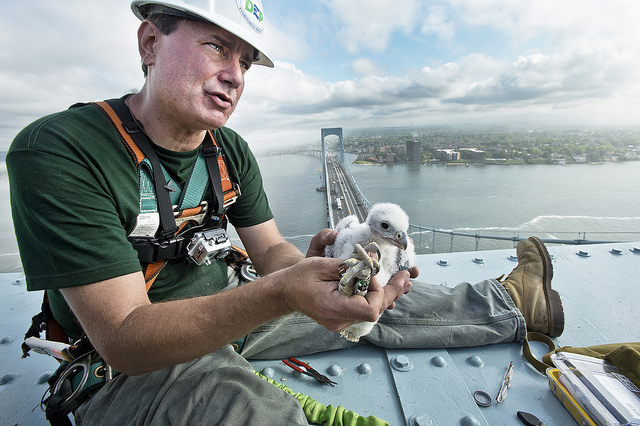
Of course, the chick’s falcon parents are wary of the process. So an MTA employee named Massimo Vincenzi “keeps them at bay” as they’re being banded using some brooms, of course.
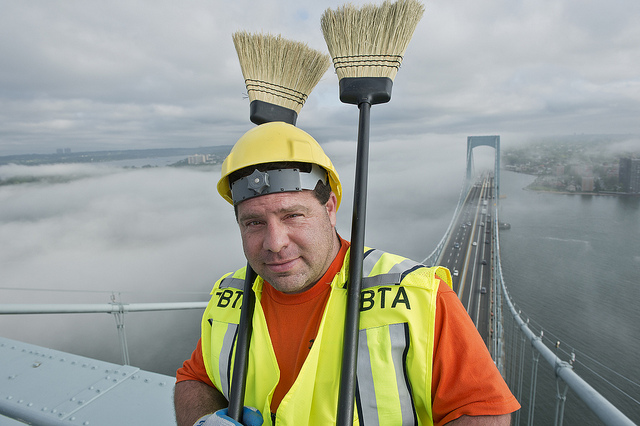
There are actually a surprising number of animals in Cashin’s photos — here’s his shot of an MTA officer and his canine partner Mullen, who won a trial for explosives detection in 2011.
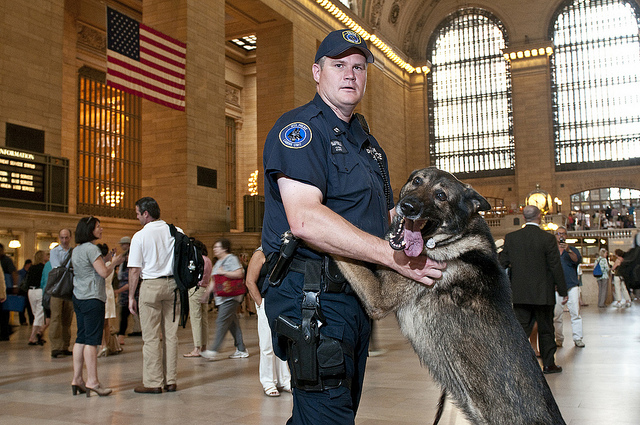
The job of documenting the MTA also means documenting its crises, from broken switches to hurricanes.
Cashin was on the scene before, during, and after Hurricane Sandy, documenting everything from authorities in the process of closing bridges and tunnels before the storm hit:
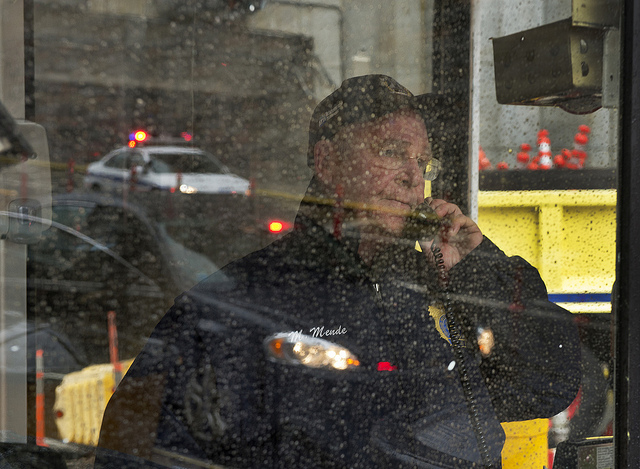
To the debris of the flooded South Ferry Station:
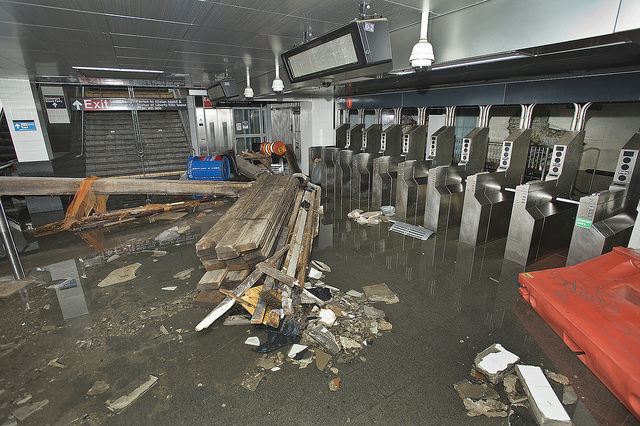
To the rush to repair the system, including this shot of a “pump train” removing ocean water from the L Train tunnel.
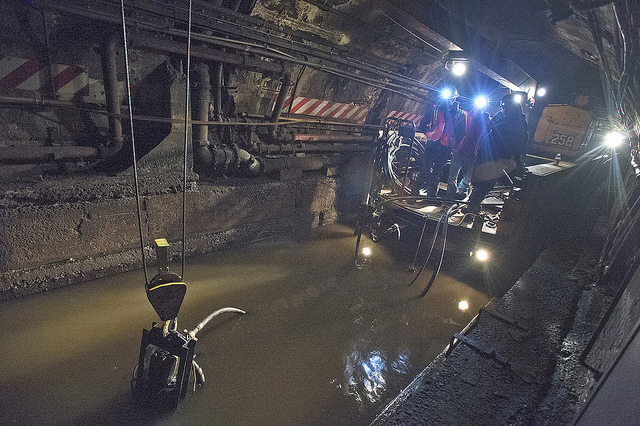
Here’s a subway car being removed and transported to Rockaway to create the special shuttle to replace the A Train, destroyed during the storm:

In 2012, as the Space Shuttle Enterprise made its final voyage through NYC, he captured it passing underneath the Verrazano-Narrows Bridge.
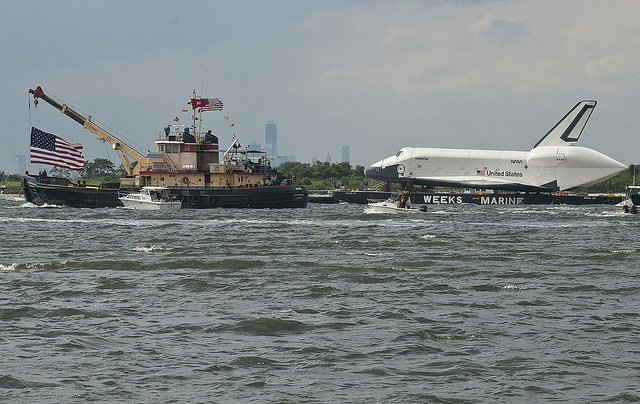
But Cashin’s wheelhouse is definitely underground, where he’s spent more than a decade documenting the tunnels and caverns taking shape below the city.
Here’s a worker leaving one tunnel in the East Side Access project in 2013.
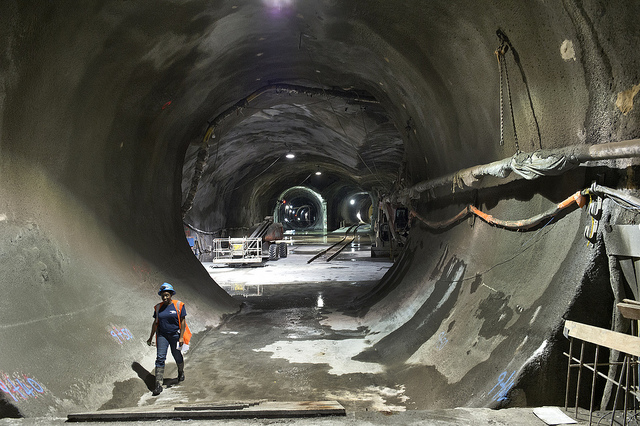
And soldering in the 86th Street caverns in 2014.

Electronics and reinforcements take shape around one tunnel below the current site of Grand Central:
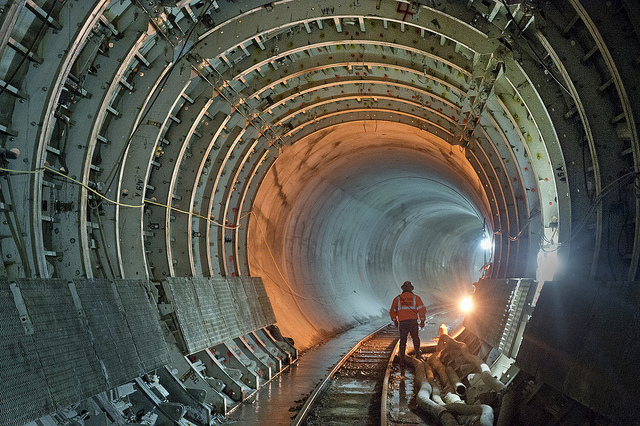
It’s rare to find a photo that doesn’t have a single worker in it. Here’s a worker doing electrical work on the Second Avenue Subway in 2012.
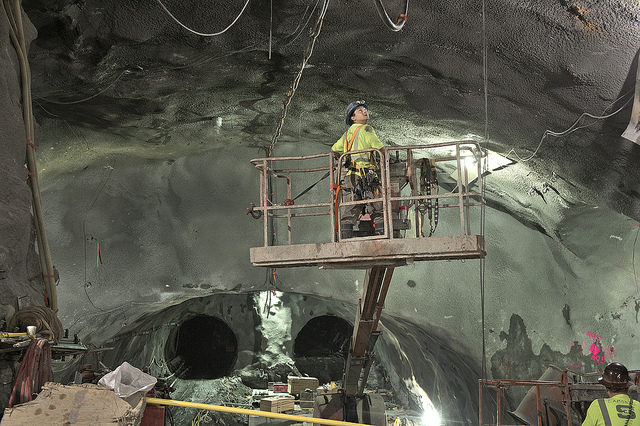
It would be easy to forget anyone is there, hundreds of feet below the city streets, turning solid rock into subways. If the MTA didn’t hire Cashin to bring back images, we might not get to see what life is like for the thousands of people who are spending their lives making these mega-projects reality.
